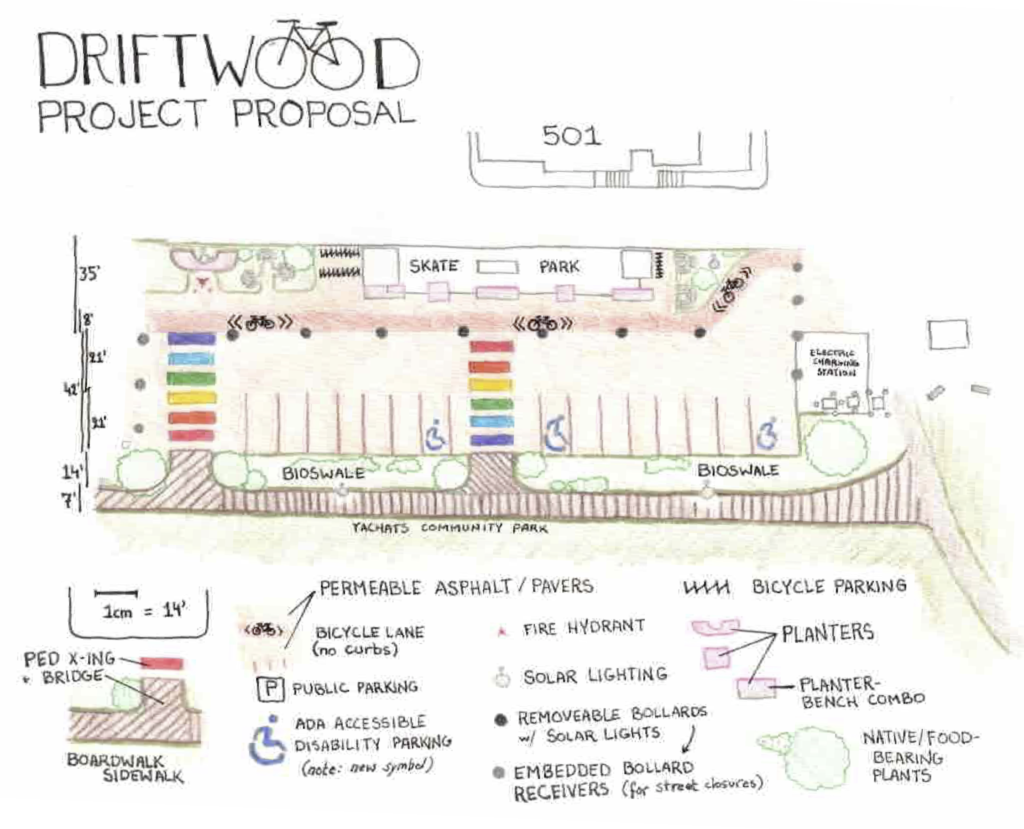
By QUINTON SMITH/YachatsNews.com
The Yachats City Council has kicked design ideas for a controversial 100-yard street paving project back to three commissions to help find ways for the $165,000 project to be more community-friendly, shrink its size, and possibly lower its cost.
The council, after a 2 hour 40 minute special meeting Wednesday, asked the commissions to recommend design elements by the council’s Sept. 16 meeting.
It will be at least the third time the two of the commissions – Parks & Commons and Public Works & Streets – have dealt with the issue. The Planning Commission, which met online with the council and two other groups Wednesday, is new to the discussion – although four of its members have expressed opinions as individuals.

The special meeting came about after a 3-2 vote in June to proceed but a parliamentary delay in July that led to another Aug. 5 council discussion – and a decision to throw the project back to the community for ideas and further discussion Wednesday.
After listening to a few complaints, a bunch of pros and cons, but just one concrete idea, the council asked each commission to weigh in again — after they also seek community input.
Opponents, chiefly Parks & Commons Commission member Dawn Keller, say there are many in Yachats who either oppose the project or don’t know about it. But only two of 37 to 42 people who attended the online meeting said the city could just leave the stretch of broken pavement and gravel between the 501 Building and former ball field alone.
“I’m happy to have it like it is,” Keller said, arguing for the city to not spend its $65,000 share after using a $100,000 state grant. “We like the town the way it is.”
Most people who commented felt the original project – two lanes, two sidewalks and 18 parking spaces – was just too much for the space. Most thought some kind of paving was needed, as well as parking but maybe only one sidewalk. There is also debate about how to make the street one lane wide or even one-way.
Everyone complimented the council for not bulling ahead with the project despite having enough votes to proceed.
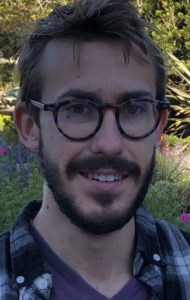
But the only people to offer alternate plans to what the city’s engineer drew up were Planning Commission member Jacqueline Danos and her son, David. They contacted architecture students to sketch some ideas, but also created their own drawing – in the city engineer’s original space – that kept the skatepark, but added seating around it, installed bike racks, planter boxes, a bioswale for water runoff, walkways inviting people to go to the field, and a boardwalk along its eastern edge.
David Danos said the current idea was “1990s thinking” when the city was in the 21st Century. Instead, he said the area could be bright, modern and inviting and a “wonderful shared space” that Yachats can use for everything from community events, parking, skating, and to establish a gateway to encourage more use of the field and wetlands.
The Danos’ also accompanied their project drawing with a five-page report detailing its elements and how a “shared street” can connect the Yachats Commons, the 501 Building, park and wetlands.
“It can be a multi-use, flexible space yet have parking available,” said Jacqueline Danos. “Doing a project like this is a benefit to the community, not only for tourists but for the people who live here.”
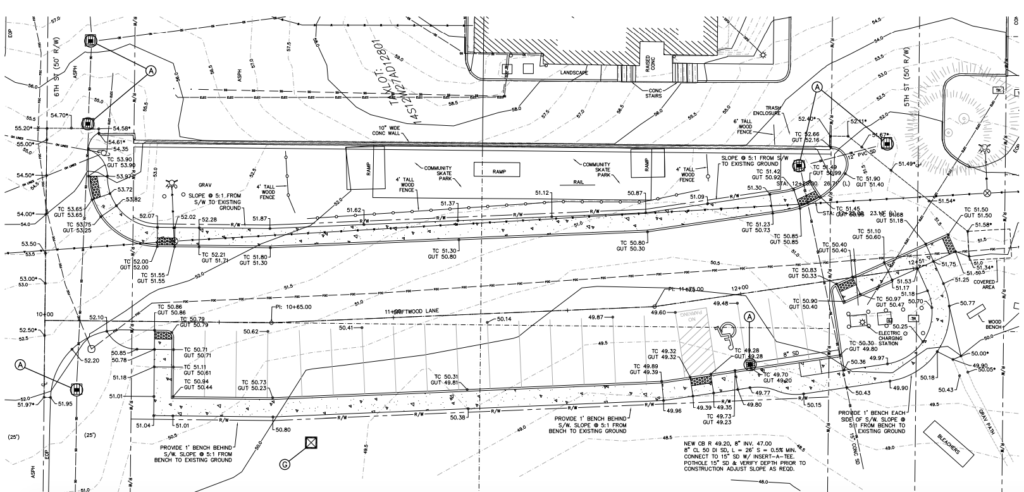
$100,000 grant expires in December 2021
The Oregon Department of Transportation has awarded Yachats a $100,000 grant that expires in December 2021 to pay for the bulk of the project. The agency has approved the current design and would have to sign off on a new design if the project changes significantly.
The city’s portion is coming from visitor amenity funds – taxes collected from motels and vacation rentals – that must be spent on tourist-related capital projects, which can include parking. That expenditure was approved this spring by the Budget Committee and later by the council.
The city has $250,000 set aside for parking projects, but has not touched the money in at least three years.
Although two commissions discussed the project, few people outside city government felt the project had received enough notice and discussion. Others said staff distractions and meeting limitations in response to the coronavirus pandemic played a role in the project proceeding without better public knowledge.
But until Wednesday, no council member, including Leslie Vaaler and Mary Ellen O’Shaughnessey who oppose the current project, and no city staff have offered compromises or alternatives – other than to criticize its size.
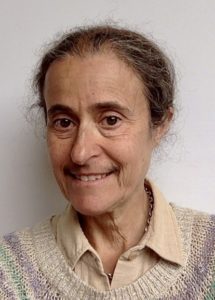
Vaaler, who has led opposition to the project, said she is worried about city spending during the pandemic and would like to keep the project to only the state’s $100,000 grant.
“We only have so many dollars, especially in this Covid time,” she said, adding that any significant expense over the state grant “needs a broader discussion.”
O’Shaughnessey said she too is worried about the cost, the potential loss of green space, and the need for parking.
Councilor Max Glenn said he liked the Danos’ ideas of creating a community space. But he also said that he hasn’t heard the outcry against the project that others claim.
“If citizens are interested they will participate,” Glenn said. “Just to assume that we haven’t heard doesn’t mean they don’t care.”
Councilor Jim Tooke echoed that sentiment, saying other than objecting to its size, opponents have not offered ideas to shrink the project.
“Doing nothing is not an option,” he said. “It’s the scope we’re debating.”
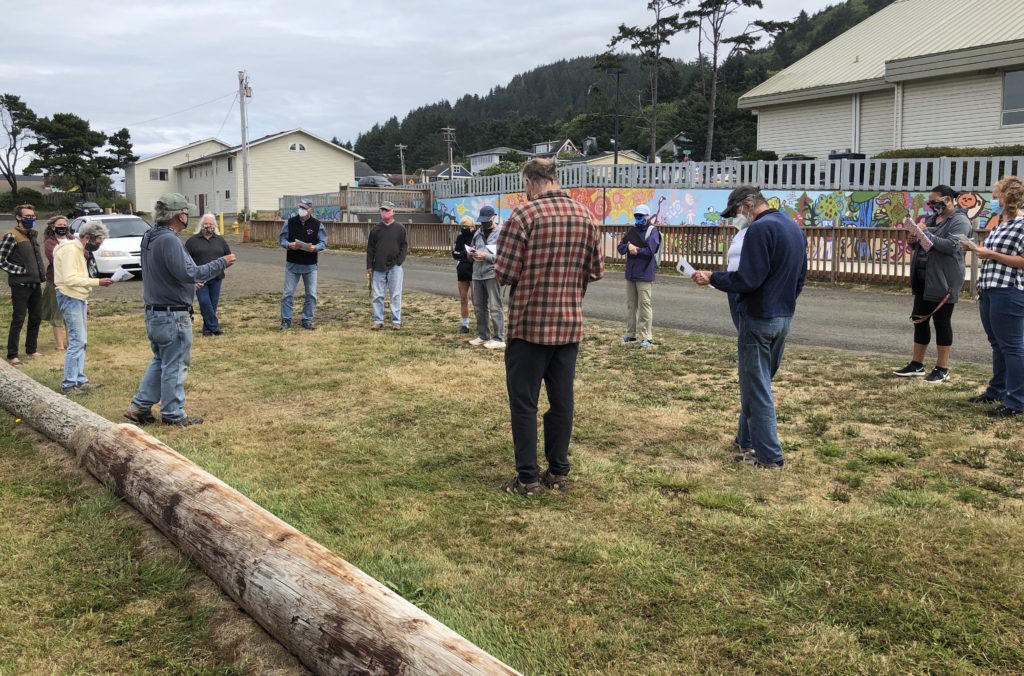
The Parks & Commons Commission quickly took up the issue Thursday because it because it already had scheduled a walking workshop of the entire area and then its regular monthly meeting. It first made an informal recommendation that the 4-acre grass field be referred to as Yachats Community Park instead of “the old ball field behind the Yachats Commons.”
More formally, the commission unanimously recommended to the council that the city re-envision the Driftwood Lane project as Park Lane and that the street and accompanying parking be considered as an entry to the park with minimal intrusion into the green space. The commission also offered specifics, saying it supported the vision of the Danos’ plan, that the project use “green practices” such as swales to mitigate water runoff, that natural or recovered materials be integrated as hardscape wherever possible, that landscaping to help draw people into the park be an integral part of the project, and, if possible, use the existing state grant and city money “to meet the dual goal of improving park aesthetics and traffic flow.”



I really don’t understand why is the Council using this ad-hoc process to involve the public. Organizing public participation in land use planning should be accomplished using our Public Involvement Plan, as specified in Goal K of our Comprehensive Land Use Plan. Isn’t this land use planning? Shouldn’t we follow the principles and procedures outlined in our Comprehensive Land Use Plan?